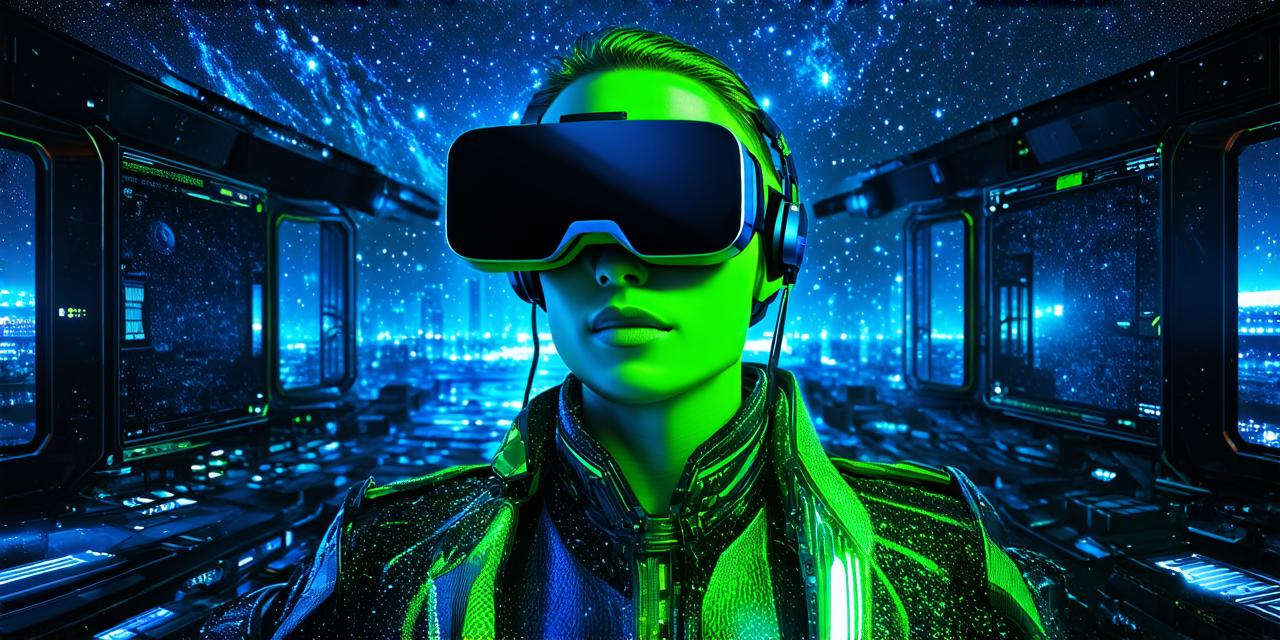Virtual reality (VR) is a rapidly growing technology that has already transformed several industries, including gaming, entertainment, and healthcare. As VR continues to evolve, it’s important for developers to understand the basics of this exciting technology and how it can be used to create immersive and engaging experiences.
What is Virtual Reality?
Virtual reality is a computer-generated simulation that allows users to experience a 3D environment as if they were physically present in that space. The technology involves the use of a head-mounted display (HMD) or other wearable devices, such as gloves or sensors, to track the user’s movements and adjust the virtual environment accordingly. This creates an illusion of immersion and allows users to interact with the virtual world in real-time.
Virtual reality technology has been around for decades, but recent advancements in hardware and software have made it more accessible and affordable than ever before. Today, VR is used in a wide range of applications, from gaming and entertainment to training and simulation, education, and therapy.
Key Components of Virtual Reality
There are several key components that make up virtual reality technology:
- Head-Mounted Display (HMD): This is the device that users wear on their head to see the virtual environment. The HMD typically consists of a headband and lenses, which track the user’s movements and adjust the image accordingly.
- Motion Capture: This technology is used to track the user’s movements in real-time, allowing them to interact with the virtual environment as if they were physically present. Motion capture can be done using sensors or other tracking devices.
- Content Creation: Virtual reality content creation involves designing and building 3D models, creating interactive experiences, and programming the software that will bring the virtual world to life.
- Software: Virtual reality software includes operating systems, middleware, and applications that enable users to interact with the virtual environment.
- Hardware: The hardware components of VR include the computer or server that runs the software, as well as any peripherals such as controllers or sensors.
Applications of Virtual Reality
Virtual reality technology has a wide range of applications across various industries, including gaming and entertainment, training and simulation, education, therapy, and more. Here are some examples:
- Gaming and Entertainment: VR is revolutionizing the gaming industry, with immersive experiences that allow players to fully engage with their favorite games. Virtual reality also has applications in the entertainment industry, such as virtual concerts or live events.
- Training and Simulation: VR can be used to simulate real-world scenarios, allowing users to practice skills and gain experience without leaving their homes or workplaces. This is particularly useful in industries such as aviation, military, and healthcare.
- Education: Virtual reality has the potential to revolutionize education by providing students with immersive and interactive learning experiences. For example, VR can be used to simulate historical events, explore the solar system, or even practice dissection without harming animals.
- Therapy: Virtual reality is being used in therapy to treat conditions such as PTSD, phobias, and anxiety disorders. By creating a controlled environment that simulates real-world scenarios, VR can help patients confront their fears and improve their mental health.
- Real Estate and Architecture: Virtual reality technology can be used to showcase properties or build designs in a realistic and immersive way, allowing potential buyers or clients to experience the space as if they were there in person.
How to Get Started with Developing Virtual Reality Content
If you’re interested in developing virtual reality content, here are some steps to get started:
- Familiarize yourself with the key components of VR technology and how they work together to create immersive experiences.
- Research the various applications of VR across different industries and identify which area you would like to focus on.
- Learn about the software and tools used for creating virtual reality content, such as game engines (e.g., Unity, Unreal Engine), 3D modeling software (e.g., Blender, Maya), and programming languages (e.g., C++, C#).
- Start experimenting with these tools by creating simple VR experiences or modifying existing ones.
- Join online communities and forums dedicated to virtual reality development to learn from experienced developers and share your own knowledge.
- Continuously stay updated on the latest advancements in VR technology and best practices for developing engaging content.
